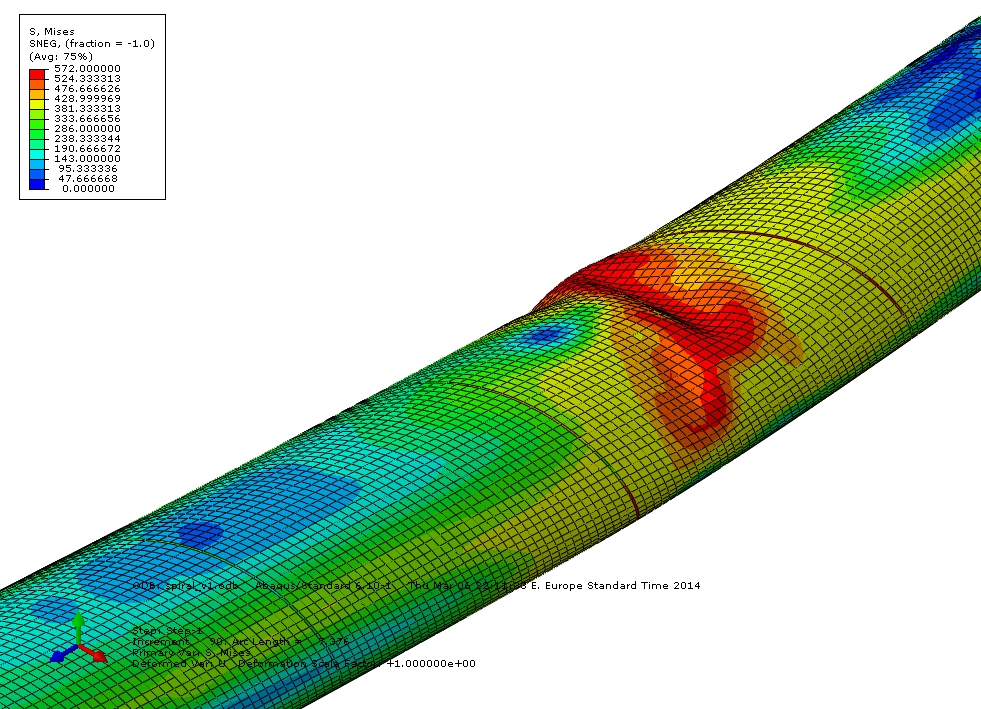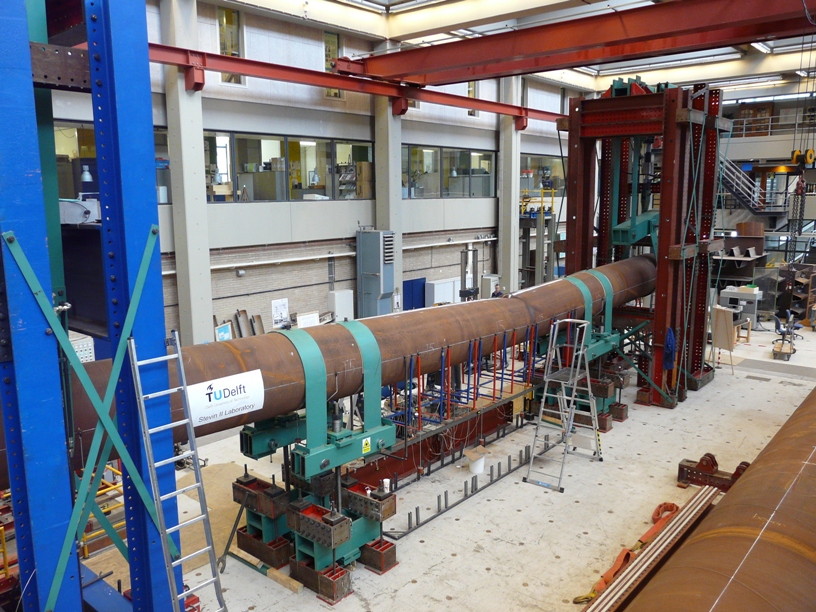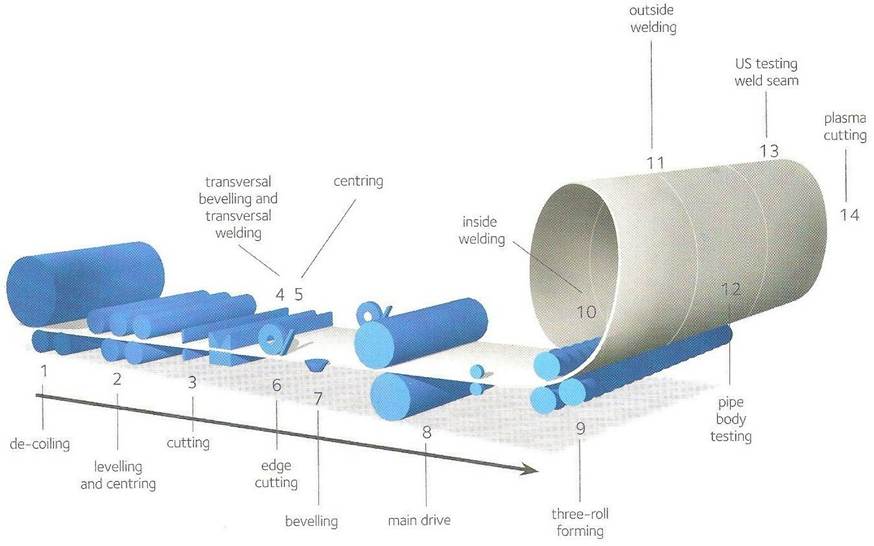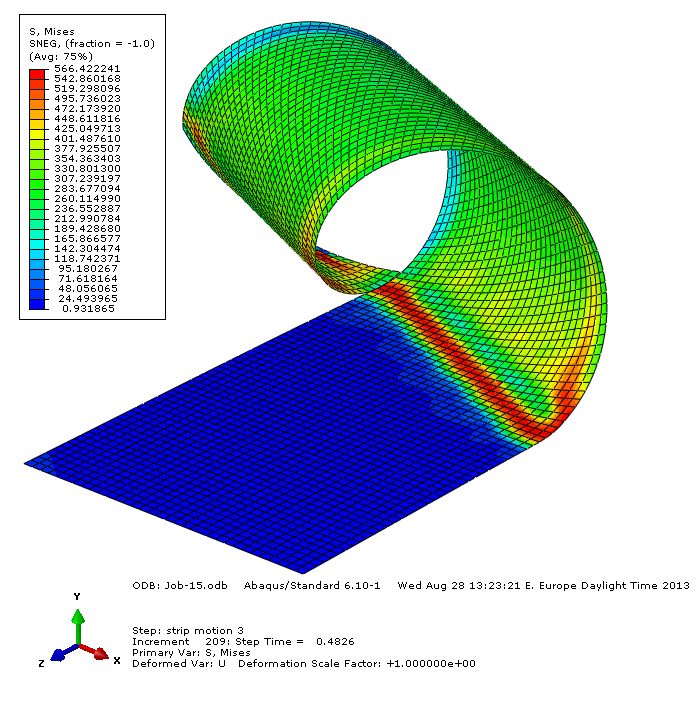Bending Resistance of Steel Tubes in CombiWalls (COMBITUBE)
Sponsor
European Commission
Program
RFSR-CT-2011-00034
Partners
Delft University of Technology, The Netherlands
ArcelorMittal, Luxemburg
University of Edinburgh, United Kingdom
Karlsruhe Institute of Technology, Germany
University of Thessaly, Greece
BAM Infraconsult bv, The Netherlands
Objective
In the COMBITUBE project, safe and economic design methods and verification rules for tubes in CombiWalls will be developed, which will enhance the economic application of steel CombiWalls because the present rules are cannot adequately describe the load deformation behaviour up to the point of strength loss due to local buckling. Therefore the present rules lead to over-conservative and uneconomical designs. The new rules developed in this project will address the several influences that control the local buckling behaviour in a much more direct and precise manner than to date. By including these effects, a substantial reduction in the scatter observed between test results and rules for local buckling can be achieved. A reduced scatter will give higher design resistances. In addition to the accepted stress based design approach, strain based design methods will be developed and applied. Strain based design permits a much better insight into the buckling behaviour which is strongly dependent on deformations in tubes where the cross section is partly or substantially yielded. The project will take advantage of the experience and knowledge of the partners in pipeline industry applications to introduce strain based design methods for tubes in structural applications such as CombiWalls. The COMBITUBE project will go well beyond the current state-of-the-art. The focus will be on the typical slenderness ratio range of CombiWall tubes. These are generally compact, but the current relevant design rules of EN 1993-1-6 yield very conservative results because they aim primarily at slender sections. The project will also account for the spiral welding fabrication process and the specific material behaviour of these tubes.
COMBITUBE is characterized by both innovation and originality:
(a) It is the first RFCS project on this subject.
(b) It combines expertise from experts in both thin walled shell buckling and thicker walled shell buckling, both experimentally and numerically.
(c) The design guidelines to be developed will be both novel and unique, incorporating modern aspects of structural steel design, in particular strain based design.
(d) The new design rules for local buckling will be innovative and will greatly enhance economic and safe designs, because the critical influences that cause the great scatter in current design rules in different countries will be quantified and inserted in the new design rules, leading to much more detailed and accurate resistance assessments. Current design rules express local buckling almost exclusively through the D/t ratio, sometimes including ovalisation and/or the yield strength. This project should produce results that are of great interest in pipeline applications too.
Principal Investigator for U.Th.
Spyros A. Karamanos
Total Budget
1,413,318 Euros
U.Th. Budget
199,175 Euros
Duration
36 months (2011 - 2014)
Figures

Figure 1: Schematic and photo of a CombiWall (combined wall of tubes and infill sheeting connected with welded slots to the tube)

Figure 2: Buckling shape of a large-diameter spiral-welded tube under pure bending.

Figure 3: Four-point bending test of a spiral-welded tube.

Figure 4: Buckling shape of a spiral-welded tube under bending.

Figure 5: Manufacturing process of spiral-welded tubes.

Figure 6: Numerical simulation of cold bending during manufacturing process of spiral-welded tubes.